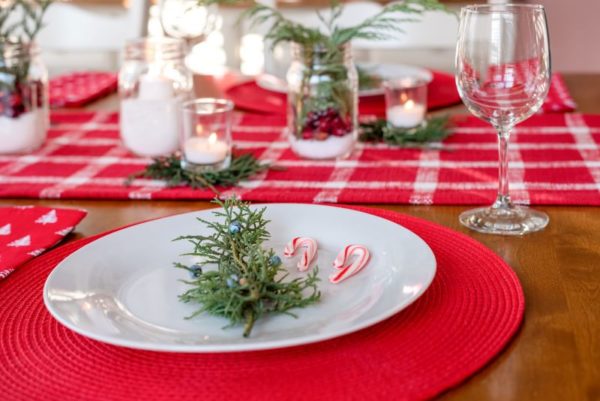
Making the Holidays More Sustainable
The holidays may be a cheery time of year for you and your family and friends, but all those gift swaps, feasts, and other festivities aren’t a party for the planet. Americans generate an additional 5.8 million tons of waste every December.
The fossil fuels, trees, and other natural resources that go into producing plastic toys, fast fashion, novelty gifts, and wrapping paper take a big toll on the environment, including wildlife and the habitat they need to survive.
They also take a toll on many people’s well-being. A 2022 national survey conducted by the Center for Biological Diversity, where I work, found that 91% of people in the United States agree that the holidays are too materialistic and nearly 9 out of 10 believe the holidays should be more about family and caring for others, not giving and receiving gifts.
It’s clear that our more-is-better approach to the holiday season isn’t serving society or the Earth. The good news is that a few simple shifts can help make the holidays more sustainable.
Greener Gifts
Secondhand gifts are good for the environment and your pocketbook. A unique piece of pottery found at a thrift shop or a toy picked up from a yard sale saves the resource extraction and pollution that would have gone into making the same product new. And secondhand gifts are usually half the price.
Non-material or alternative gifts are also a great way to give without the environmental load or breaking the bank. Instead of buying or requesting a material item, consider gifting movie tickets or museum passes or treating a friend to a meal at their favorite restaurant. Better yet, give them your time or skill — a home-cooked meal or a babysitting voucher.
If you do give or request a material gift this holiday season, try to focus on local shops or those owned by women or people of color as a way to feed your dollars back into the local economy and support equity. And instead of wrapping your gifts in non-recyclable wrapping paper, consider waste-free gift wrapping options.
Sustainable Celebrations
Gathering for holiday feasts is a fun way to make memories and enjoy a delicious meal, but unfortunately those big meals can also generate a lot of food waste.
To make sure you make just the right amount of food, plan ahead and finalize your menu early. Knowing exactly what you want to make and how many people you’re expecting will reduce last-minute grocery store runs, cutting waste and saving money.
During the meal, use reusable non-plastic service ware instead of throwaway items. The plastic typically used in food containers contains chemical additives like endocrine disruptors, which are associated with health impacts including cancer, birth defects, and immune system suppression in humans and wildlife.
It’s also a good idea to ask people to bring their own reusable containers for leftovers so that extra food doesn’t end up in the trash. Sending folks home with leftovers is good for everyone.
Finally, making plant-based meals or shifting meat from the main course to a side dish helps the environment, your wallet and your health. Easy plant-based swaps keep holiday meals innovative and interesting.

Sustainable Holiday Décor
It’s fun to turn your home into a festive winter wonderland, but the plastic holiday décor that’s lining the shelves this time of year isn’t doing any favors for the planet.
For décor that’s easy on the environment and your wallet, bring the outdoors in. Decorating with greenery clippings, poinsettias, beeswax candles, and foraged pinecones is inexpensive and healthy, since the act of collecting materials gets you outside and forgoes plastic.
Thrift stores are filled to the brim with whimsical, nostalgic holiday décor this time of year, so before you buy new make sure to browse the aisles of your favorite secondhand shop.
If your tradition is to put up a Christmas tree, consider creating a tree from materials you already have around your home like a houseplant or a stack of books, injecting playfulness and creativity into your celebration.
While purchasing real Christmas trees can sequester carbon and support local economies, they are also often sprayed with chemical pesticides that are bad for workers and the environment. Likewise, artificial trees are usually made from chemically intensive PVC plastic. You’ll need to use your artificial tree between 12 and 20 years to match the smaller carbon footprint of a real tree.

Embrace Winter Rituals
While the materialistic grind of the holidays can make us all feel overwhelmed and depleted, it’s important to remember that many traditional winter rituals call for us to slow down, renew our spirits, and be at rest.
This December take time to celebrate the solstice and the return to light, take a walk in the woods, read books while tucked under cozy blankets, or make warm and nourishing stews.
These rituals are good for the planet because they’re not resource-intensive — and they help to prepare us for the year to come.
Will You Help Us Simplify the Holidays?
The Center for Biological Diversity is conducting a survey about winter holiday traditions. You can help us shape the future of sustainable holidays by filling out this short survey.
About the Author
 Kelley Dennings is a campaigner at the Center for Biological Diversity. She has 20 years of experience working in waste prevention and leads the Center for Biological Diversity’s Simplify the Holidays campaign.
Kelley Dennings is a campaigner at the Center for Biological Diversity. She has 20 years of experience working in waste prevention and leads the Center for Biological Diversity’s Simplify the Holidays campaign.